Last-Minute NYC Holiday Gift Guide 🎁
We’ve created a holiday gift guide with presents for the intrepid New Yorker that should arrive just in time—


Peaking over the foliage outside the Hall of Science in Flushing Meadows-Corona Park are two towering metal structures you wouldn’t expect to find in Queens, rocketships. These space-age remnants are relics of the United States Space Park, an attraction created by NASA and the Department of Defense for the 1964 World’s Fair. These vessels aren’t even the first rockets to come to New York City. In 1957, a Redstone rocket was put on display in the main concourse of Grand Central Terminal. While the Redstone rocket was only a temporary fixture, you can still see the World’s Fair’s rockets today in Rocket Park, a playground area outside the Hall of Science.
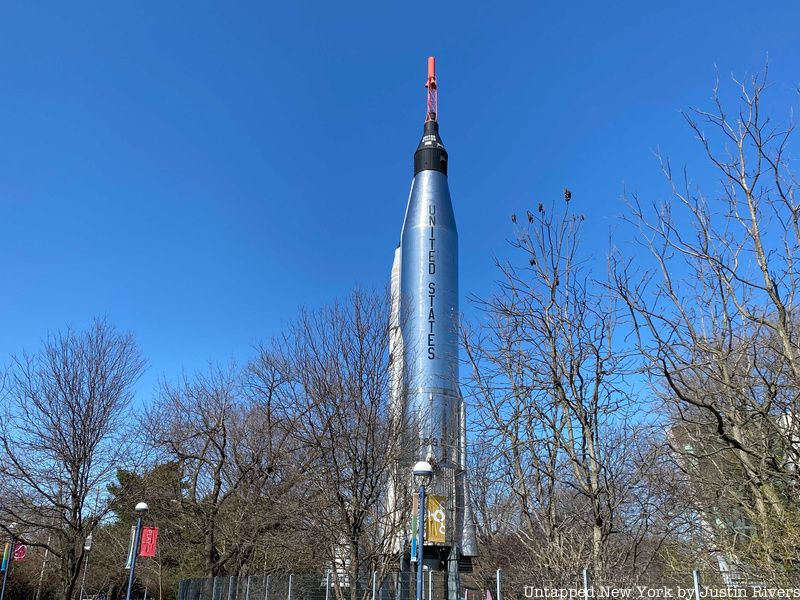
The official theme of the 1964 fair was “Peace through Understanding,” with a focus on the future and “Man’s Achievements on a Shrinking Globe in an Expanding Universe.” By the time the fair started, the United States was in the throes of the Space Race. In 1961, Alan Shepard Jr. became the first American in space. In 1962, President Kennedy had promised we would go to the moon by the decades’ end, and in 1963 Gordon Cooper made 22 orbits around the Earth, and Project Mercury, America’s first human space flight program, came to a close. In 1964, America was looking ahead to landing a man on the moon.
The fair was buzzing with excitement over the final frontier. Streets in the park’s radial grid pattern had names like Universe Court, Astronaut Court, Avenue of Science, and Avenue of Discovery. Visitors would find the iconic Unisphere in the Fountain of the Planets. The space motif is also exemplified in the Rocket Thrower, a massive bronze statue by Donald DeLue. The Rocket Thrower is posed in motion as he hurtles a rocket towards a constellation of gilded stars.
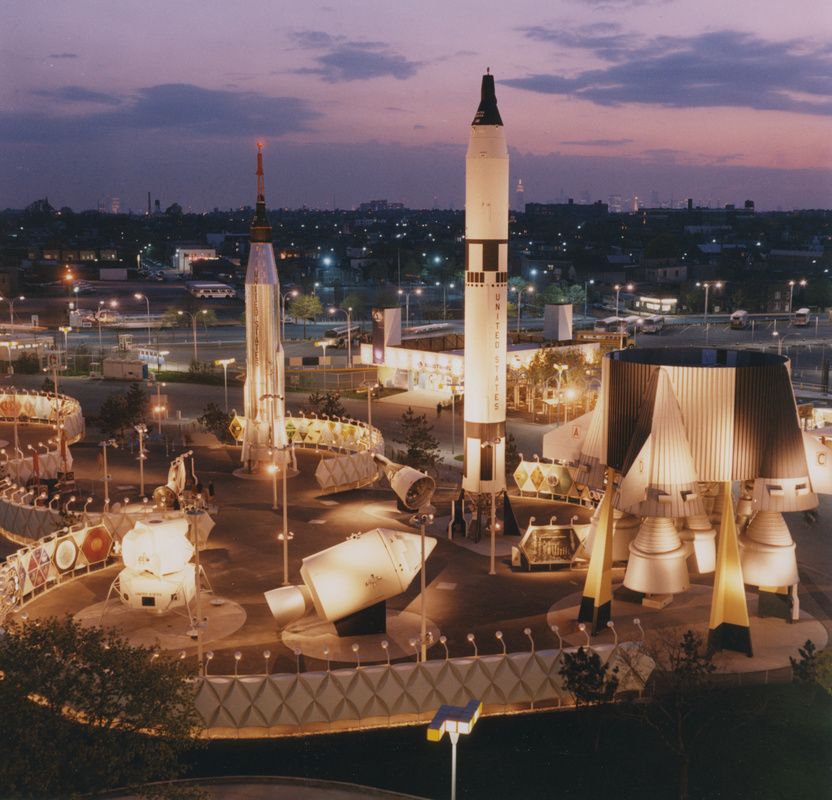
The United States Space Park at the World’s Fair gave people a chance to see space travel technology, which they heard so much about on television, up-close in real life. Spread throughout the two-acre park, there were pieces of both the Mercury and Gemini space flight programs, including the “boattail” or propulsion section of the massive Saturn V rocket (the rocket that would eventually take astronauts to the moon), a Project Mercury spacecraft that had orbited the Earth, a model of the Apollo, a full-scale X-15 rocket-powered research airplane, and two giant rockets. The Titan II rocket stretches 110 feet into the air and is topped by a Gemini two-person space capsule. The Atlas rocket, which was the type used in early spaceflight missions, stands just a few feet shorter. These exact rockets never traveled towards space but were originally made for the Air Force in 1961 to carry nuclear warheads. They were donated to the park by NASA.
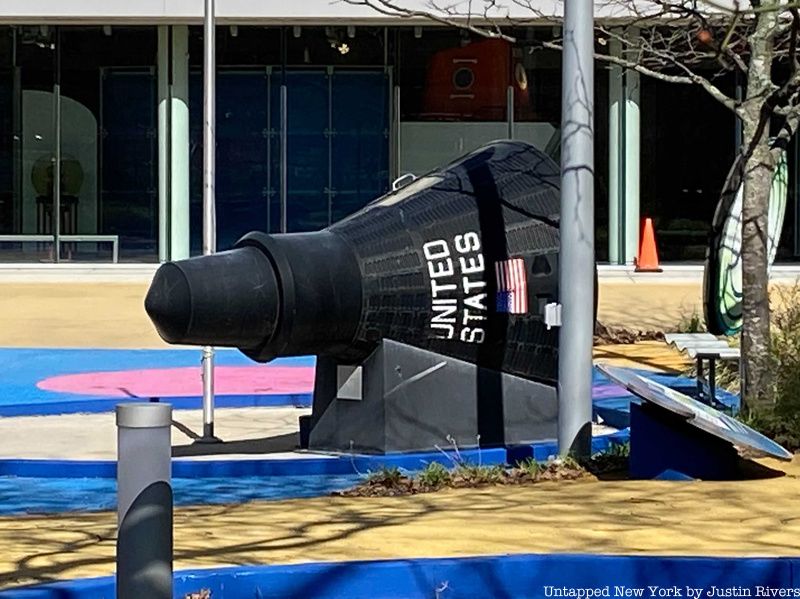
A guide for the 1964 World’s Fair advertises “Aeronautical engineering students are on hand to act as expert guides” at the Space Park. The park was visited by notable science figures, including astronaut Elliott See, the controversial aerospace engineer Dr. Wernher Von Braun, and James Webb, the Administrator of NASA. The park opened in conjunction with “The Cathedral of Science” designed by Wallace K. Harrison, which serves today as the Great Hall of the science museum.
In the years following the World’s Fair, the Space Park fell into disrepair. In 2001, the remnants were shipped to Akron, Ohio, where they were restored by Thomarios®, a firm that has worked on rocket repairs for the Kennedy Space Center and the Smithsonian Institution. The $2 million restoration included removing corrosion, replacing exterior panels, installing new steel framing, and adding new paint. The reinstallation ceremony in 2003 was attended by Walter Cronkite and astronaut Ellen Baker as well as a group of young students.
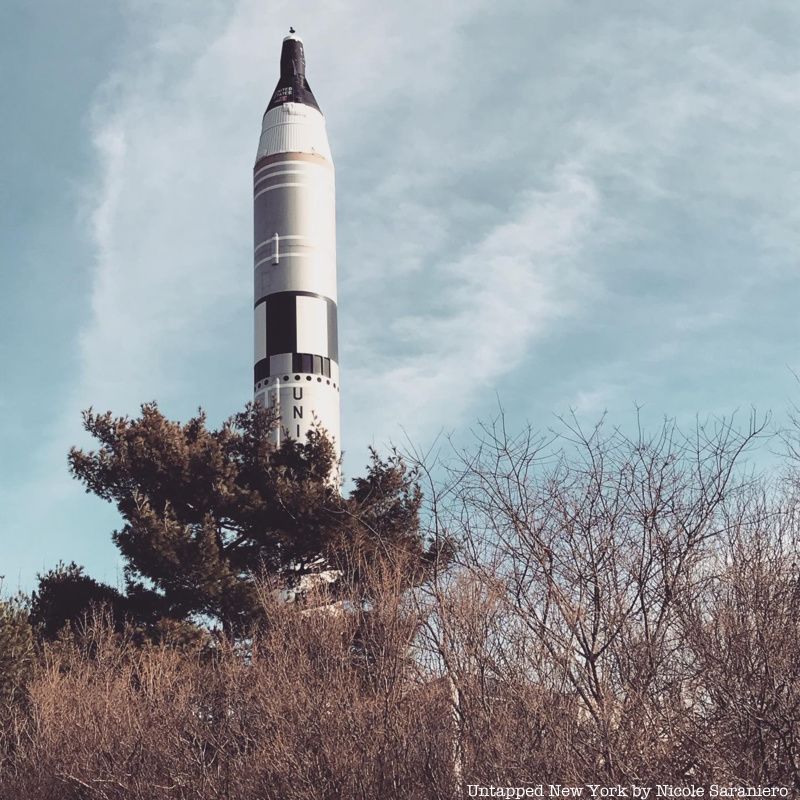
In 2010, a nine-hole mini-golf course was installed at the park. At each hole, the behavior of the golf ball demonstrates a different principle of astrophysics. You can visit Rocket Park to see these Space Age World’s Fair remnants up close on Wednesdays through Sundays.
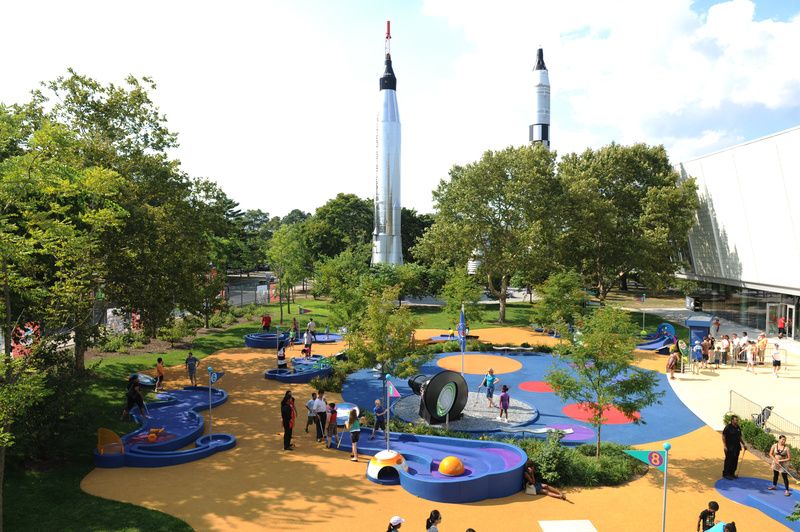
You can uncover even more traces of New York City’s World’s Fairs on our upcoming Remnants of the World’s Fairs walking tour led by Untapped New York’s Chief Experience Officer Justin Rivers! This tour does not stop at Rocket Park, but you can walk over after discovering all of the other remnants on the tour.

Track down abandoned buildings, buried time capsules, and works of art leftover from the World's Fairs that Queens hosted twice!
Next, check out 1964 World’s Fair Building is Now Pizza Place in St. Louis and Located: Remnants of the Aquacade fro the 1939 World’s Fair
Subscribe to our newsletter